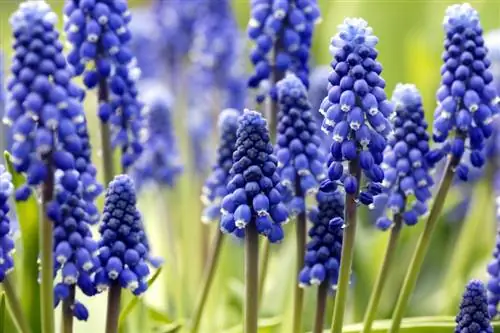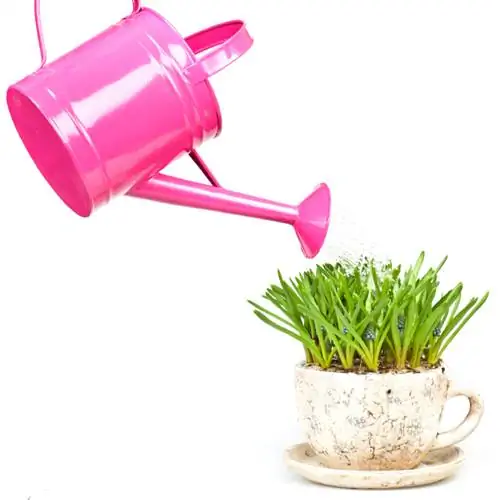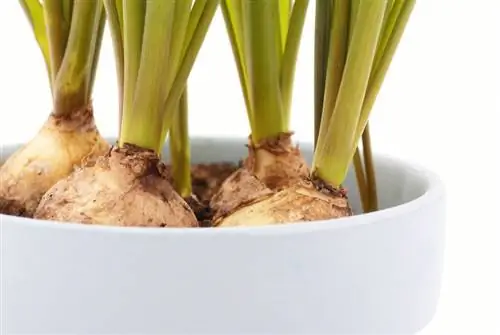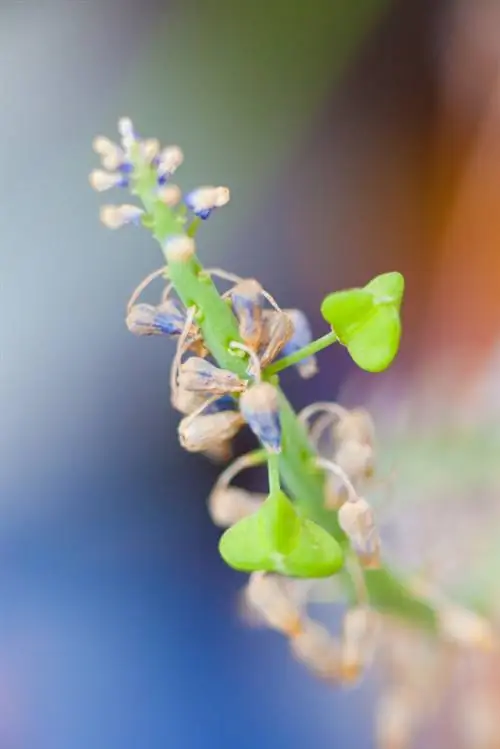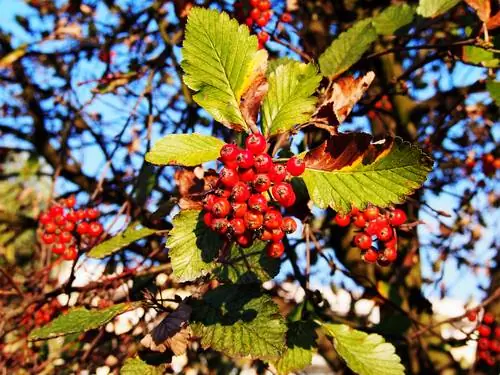- Author admin [email protected].
- Public 2023-12-16 16:46.
- Last modified 2025-01-23 11:20.
Many people know its blue flowers that are reminiscent of grapes. But very few people know her name. We're talking about the grape hyacinth. Get a comprehensive overview of their features and properties here!
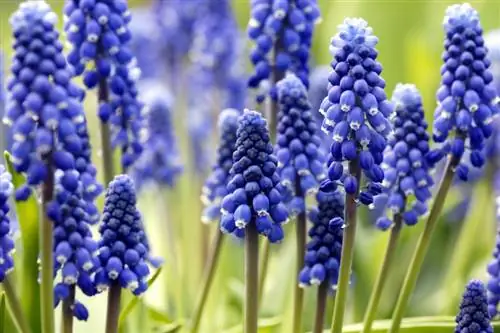
What are the most important properties of grape hyacinth?
The grape hyacinth is a perennial onion plant from the asparagus family. It impresses with its cluster-shaped, blue-violet flowers and thrives best in a sunny to partially shaded location with nutrient-rich and well-drained soil.
The most important facts in a bundled form
- Plant family: Asparagus family
- Plant type: Onion family
- Origin: Southeastern Europe, Asia Minor
- Other names: pearl hyacinth, vineyard bush, farmer's boy, mountain man
- Leaves: linear, green
- Flowering time: March to May
- Flowers: racemose, terminal, blue to violet
- Fruits: three-part capsule fruits
- Seeds: black, ovoid, smooth
- Location: sunny to partially shaded
- Soil: permeable, nutrient-rich
- Propagation: self-sowing, sowing, daughter bulbs
- Care: no special care necessary
- Special features: poisonous, good cut flower
A closer look at your appearance
This is a perennial and herbaceous onion plant that likes to form breeding bulbs in the ground in order to reproduce with them. The growth is ground-covering and reaches a height of between 15 and 30 cm.
The foliage, which yellows in summer and sprouts again in autumn, is arranged in a basic rosette. Each plant usually forms 2 to 3 leaves. These are lanceolate, narrow, linear, smooth-edged, medium green and overhanging.
The main aspect is the flowers. Their flowering period is long and extends between March/April and May. There are many small tubular flowers that sit together in a racemose inflorescence. Depending on the species and variety, they range in color from light blue to dark purple. In summer they develop into three-part capsule fruits with black seeds.
What requirements does this perennial have?
The pearl hyacinth prefers to grow in a sunny place. It can also make friends with a location in light partial shade. A cool to moderately warm location is perfect for her because she doesn't handle heat well. Nevertheless, it tolerates dry times.
If you choose nutrient-rich and permeable soil when planting, you don't have to worry much about care. There is no need to add fertilizer and watering is also of secondary importance. The only thing to remember is that this plant is poisonous to animals such as cats.
Tips & Tricks
Although eating grape hyacinth can cause death in pets such as cats, this plant is less toxic to humans. However, you should refrain from consuming it!

